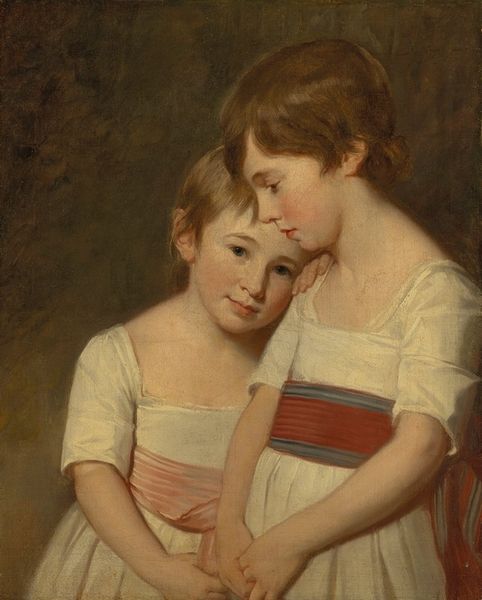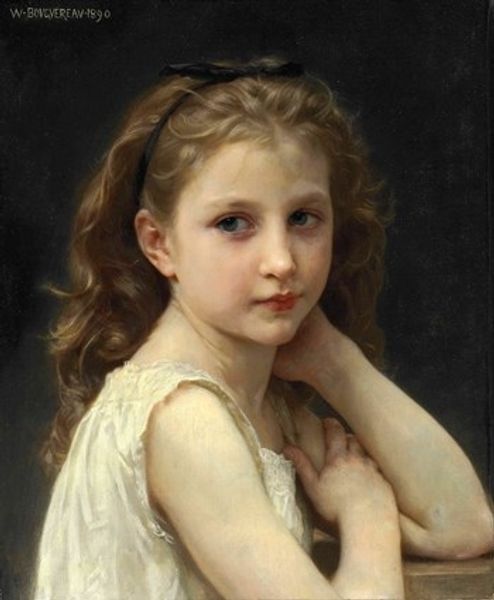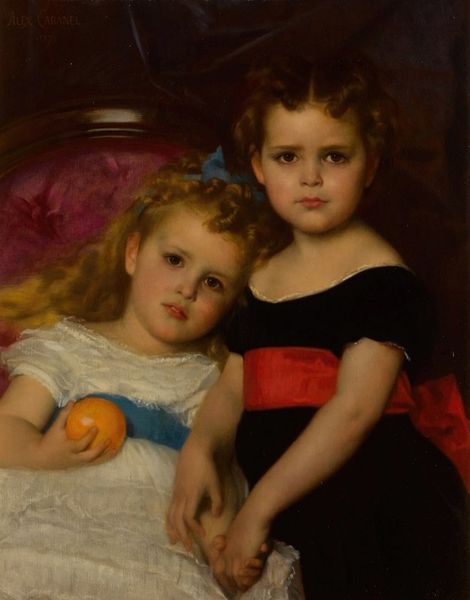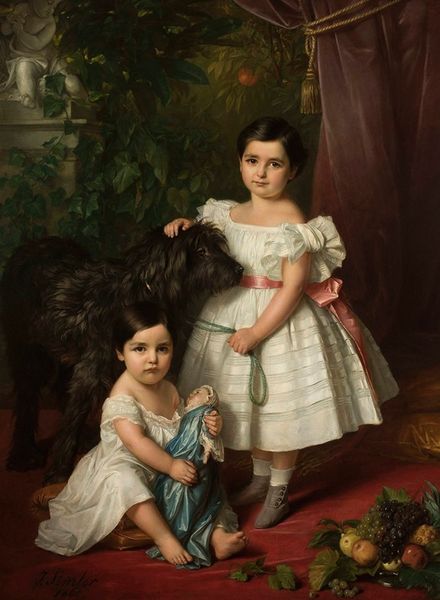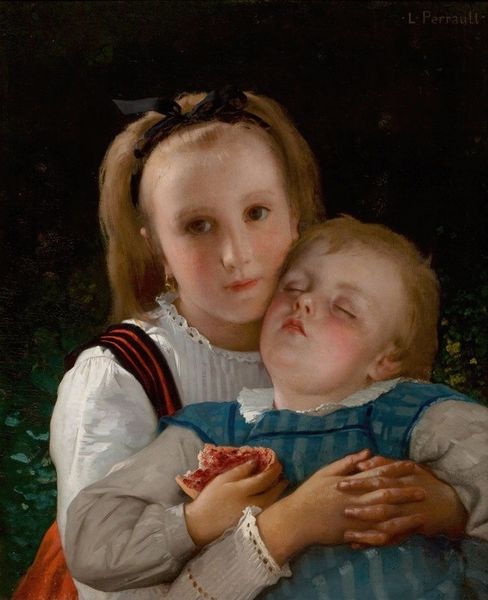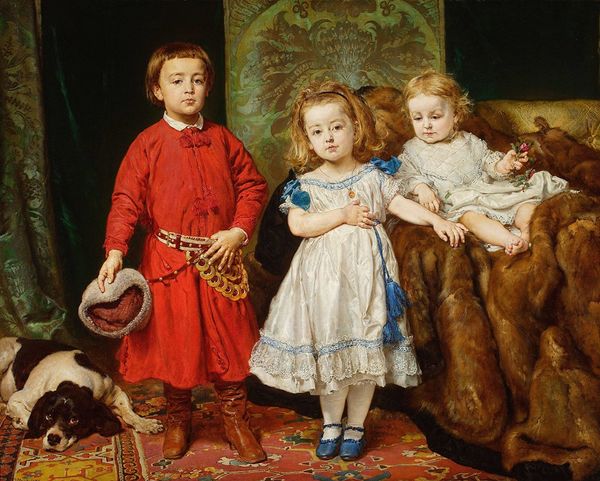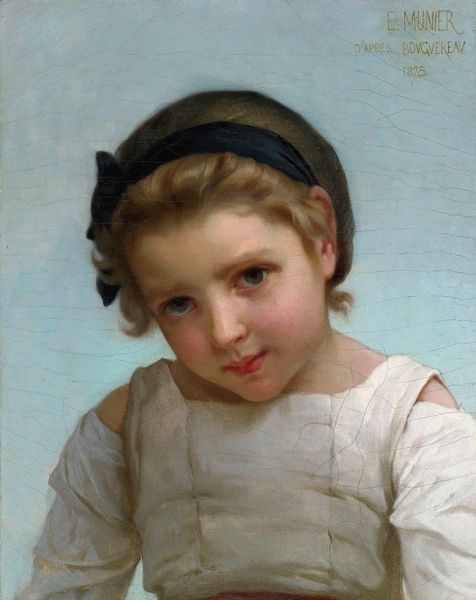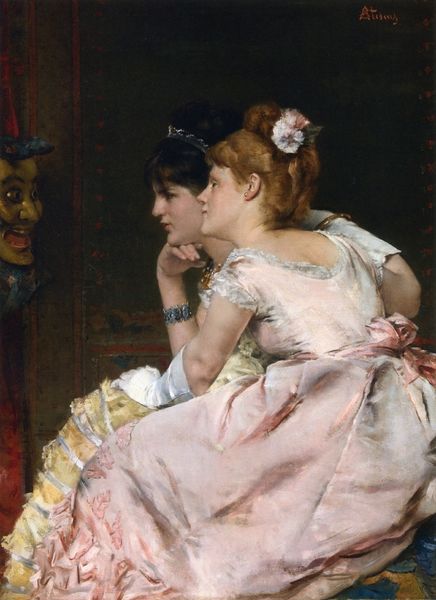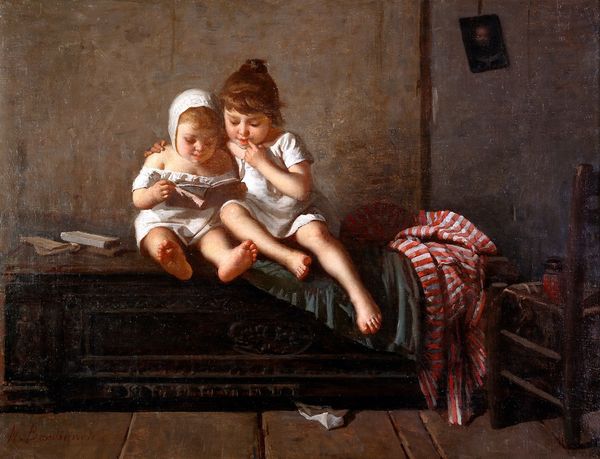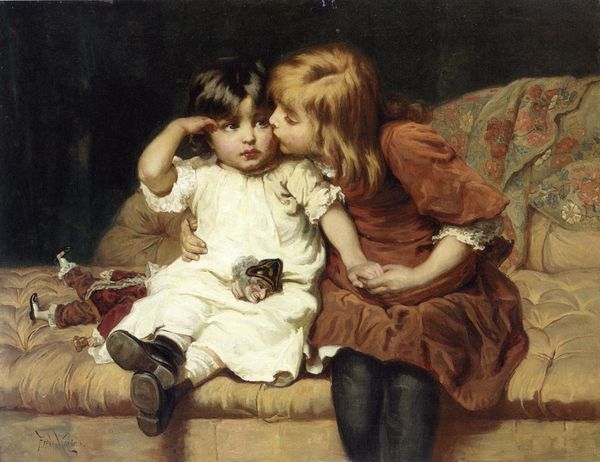
Copyright: Public Domain: Artvee
Curator: Before us hangs "A portrait of Eva and Frances Johnston," completed in 1869 by William Bouguereau. What's your immediate take on this piece? Editor: Luxurious and slightly melancholic. The velvet chair, the frills... but those somber, almost photographic expressions offset the opulence. It's quite a tableau of wealth, isn't it? I'm drawn to those deep-blue, exquisitely crafted boots. Curator: Bouguereau was, during his time, the quintessential academic painter. Known for highly polished, idealized depictions, usually scenes of peasant life or mythology that pleased the establishment. But portraiture served an important role, a function, for the wealthy bourgeoisie. Editor: Indeed, you can see the status overtly displayed in the clothing. Lace, silk, velvet - markers of their place in the social fabric. And consider the materiality of the book they hold - paper and leather, products of skilled labour. The child's very grip betrays wealth. It's a prop more than something used. Curator: Absolutely. It reveals more about the Johnsons' desire for upward social mobility through cultivated symbolism, placing their offspring amongst cultural refinement. Editor: And yet, that little girl's direct gaze seems to pierce through that pretense. The materials are meant to signal status, but that look reminds us of the labor required for this portrait to exist. I can imagine how much this would have cost them. The production and its outcome - all status symbols. Curator: Good point. It begs the question: What sort of dialogue was the artist having with his sitters and, on another level, what dialogue did he hope this painting would elicit from his target audience, the Parisian salon visitors? Were the subjects actively shaping this narrative through their gestures and clothing, or was Bouguereau controlling that representation? Editor: Perhaps both. These wealthy sitters and their choices played an equal role as raw material to his talent, the real commodity to the artist and his studio production system. But overall, I think I'm seeing this painting more for its production than the end result, now. Curator: An interesting lens through which to understand Bouguereau, traditionally considered an agent of the Academy. Well, thank you for that refreshing analysis. It prompts me to rethink what I’ve come to assume. Editor: Thanks, likewise. It's easy to see pretty paintings and get lost in what you think you see. It's also fun to explore how artists transformed raw goods and services into works of cultural and monetary value.
Comments
No comments
Be the first to comment and join the conversation on the ultimate creative platform.
